Top 25 Breathtaking Landscapes of the Azores Islands
The Azores are often described as "Europe meets Hawaii" with a mix of Iceland's striking volcanic landscapes, but those who visit these islands will quickly realize that they are truly unique beyond comparison. Having remained relatively off the radar for decades, the islands are largely untouched and yet to be discovered by tourists, which explains the reason their natural beauty and authenticity are so impeccably preserved. The locals appreciate and respect the nature of these islands, and they want to protect them just as much as they want to share them with the world. For this reason, sustainability y and preservation are top priorities here in the Azores. In fact, the destination is officially the first archipelago to ever have been recognized as one of the "Most Sustainable Tourism Destinations in the World." The pure, unspoiled landscapes of these islands attract visitors from across the globe, and with good reason.
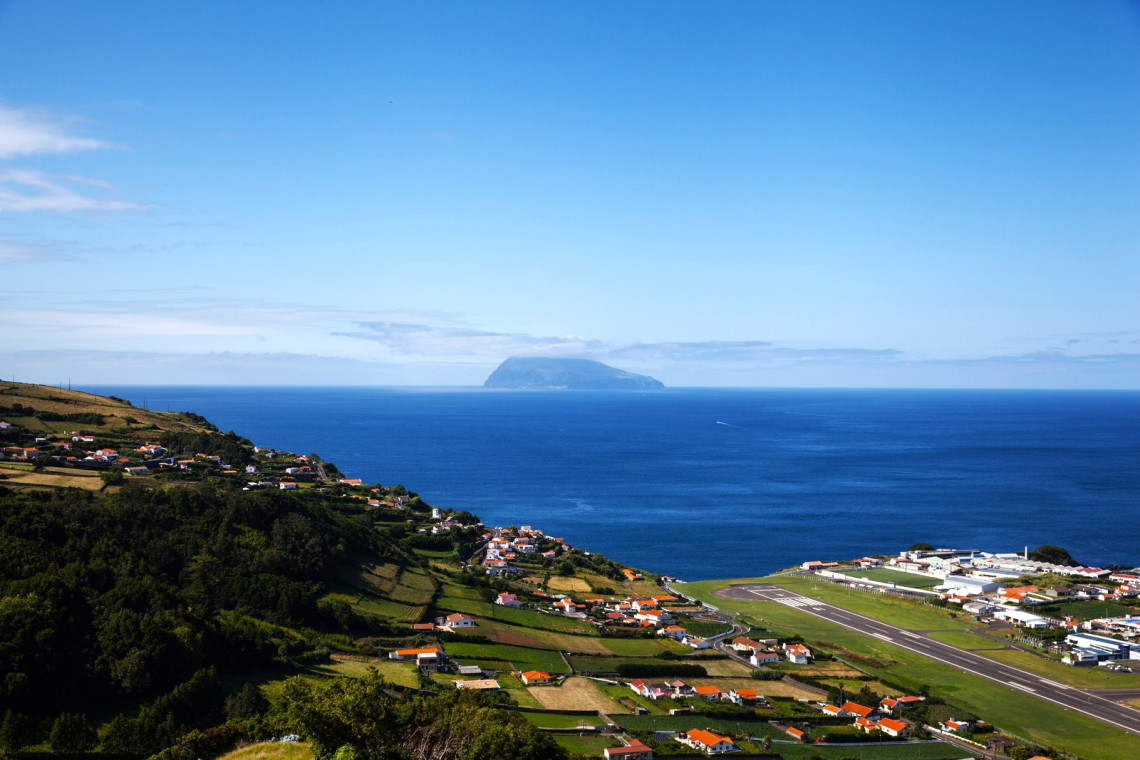
The Azores is proud to be the world's first archipelago to be officially certified by the EarthCheck Sustainable Destination program. The Azores government, alongside the local community and the tourism industry partners, have all committed to preserving the culture, land, and invaluable marine ecosystems by adopting sustainable practices. Initiatives that the Azores are currently focusing on in particular include rainwater harvesting and using renewable energies—like geothermal, solar, wind, and hydroelectric energies—to help reduce energy consumption and protect the Azores' natural resources and landscapes that we all love so we can continue enjoying them well into the future.
So, what are the most impressive views and scenic natural landscapes you can expect to see in the Azores? We give you the inside scoop, island by island, within this list of Best Natural Landscapes of the Azores Islands here.
1. Sete Cidades in São Miguel Island
One of the 7 Natural Wonders of Portugal, this show-stopping crater full of lakes has become one of the signature and most famous images of the Azores. There are (amazingly) 11 lakes in total around Sete Cidades, but they can only be seen from certain angles at the different miradouros (viewpoints) in the area. To fully appreciate the breathtaking panoramic views over the mystical blue and green lakes, head to the Vista do Rei viewpoint. While you're there, make your way over to the Boca do Inferno to enjoy some jaw-dropping 360 views overlooking the Lagoa do Canário and other lagoons below, Sete Cidades village, and an expansive view of the Atlantic Ocean beyond the ridge of the crater.
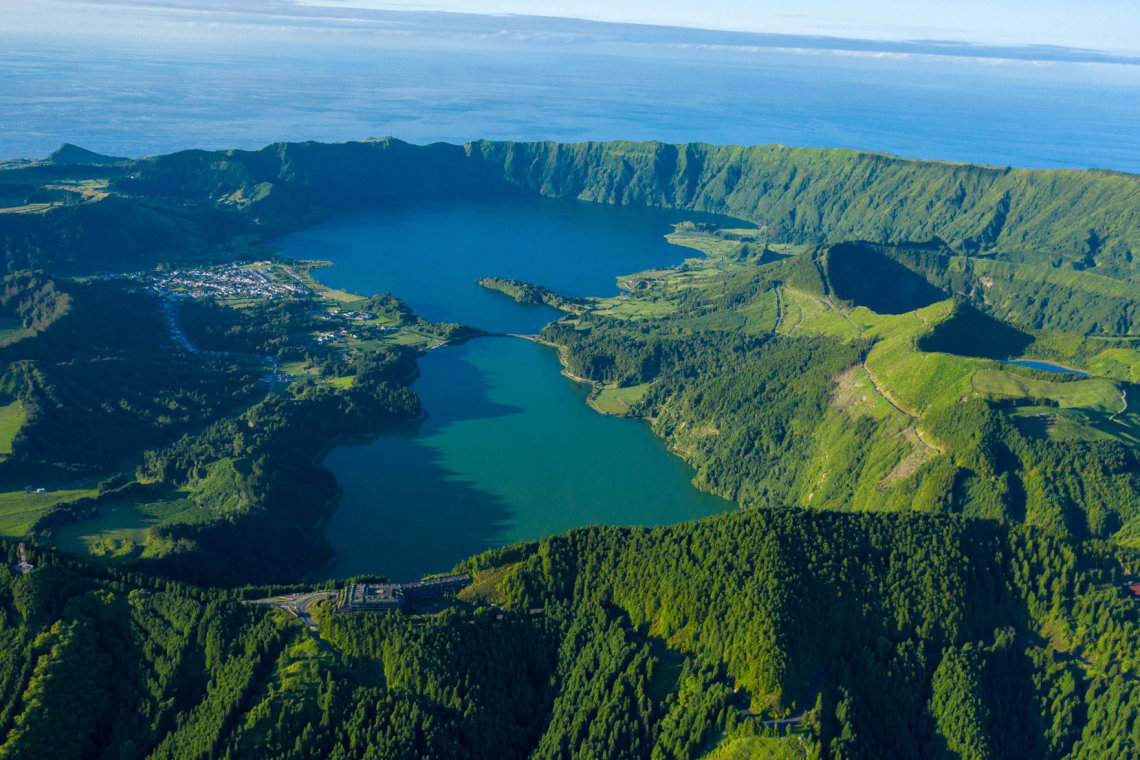
2. Lagoa do Fogo in São Miguel Island
Lagoa do Fogo, which translates roughly into "Lagoon of Fire", is a crater lake at the center of São Miguel Island. This Protected Natural Reserve sits tucked away atop the impressive Pico da Barrosa, far from the whir, hum, and hurry of civilization below. Lagoa do Fogo's crystal-clear turquoise waters are surrounded by tall mountain peaks, lush vegetation, and white sand on all sides. Take in the magnificent views at any of the viewpoints around the mountaintop, or if you're feeling adventurous, venture out on one of the many hiking trails that lead down to the lake's edge.
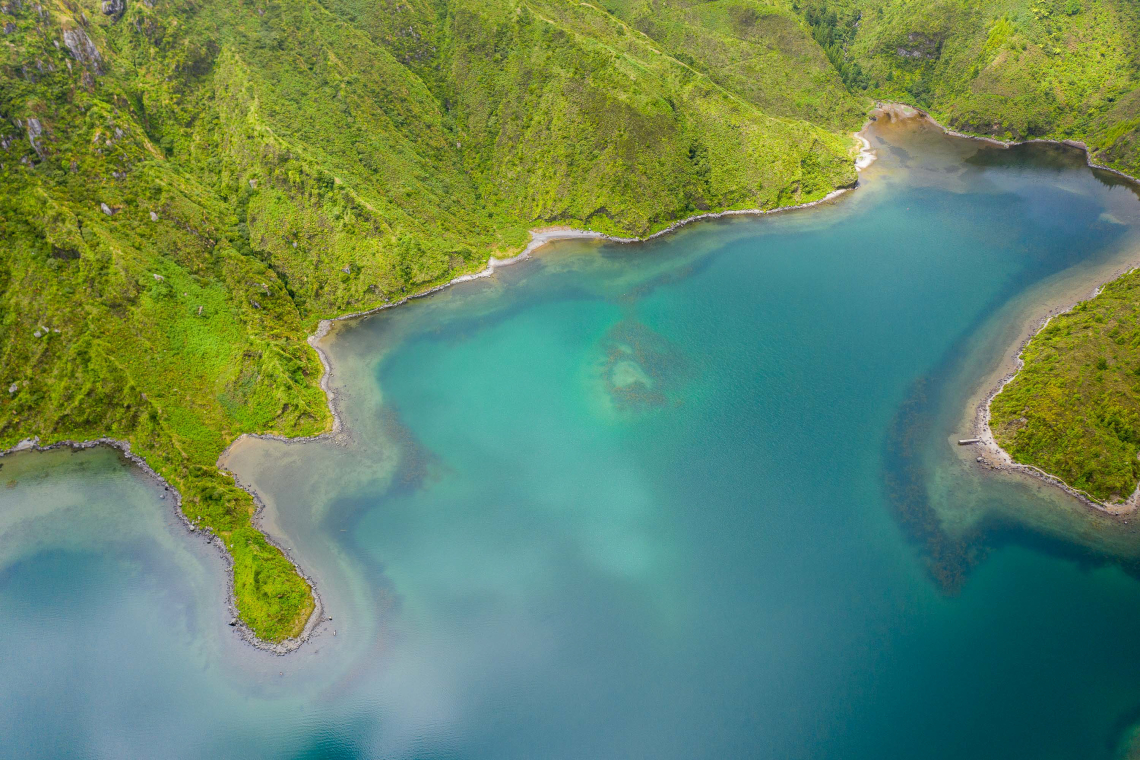
3. Furnas in São Miguel Island
Furnas Valley is famous worldwide for its bubbling caldeiras and hot springs where visitors can relax with a thermal bath at any time of the year. Still, this mystical volcanic valley is full of interesting surprises. Visitors can take in impressive panoramic views of the lake and village from the Pico do Ferro viewpoint. Head to the lake for a walk around its perimeter and surrounding parks and gardens, and then watch as restaurant workers pull steaming hot pots of Cozido (a traditional Portuguese stew) out of the fumaroles for lunch. Make your way to the charming village of Furnas to enjoy some cozido, and then take a walk around the center of town to see the bubbling sulfur pits and try the mineral spring water spouting around every corner. Nature here is constantly shifting and changing before your eyes as you watch this dormant volcano breathe with activity all around you.
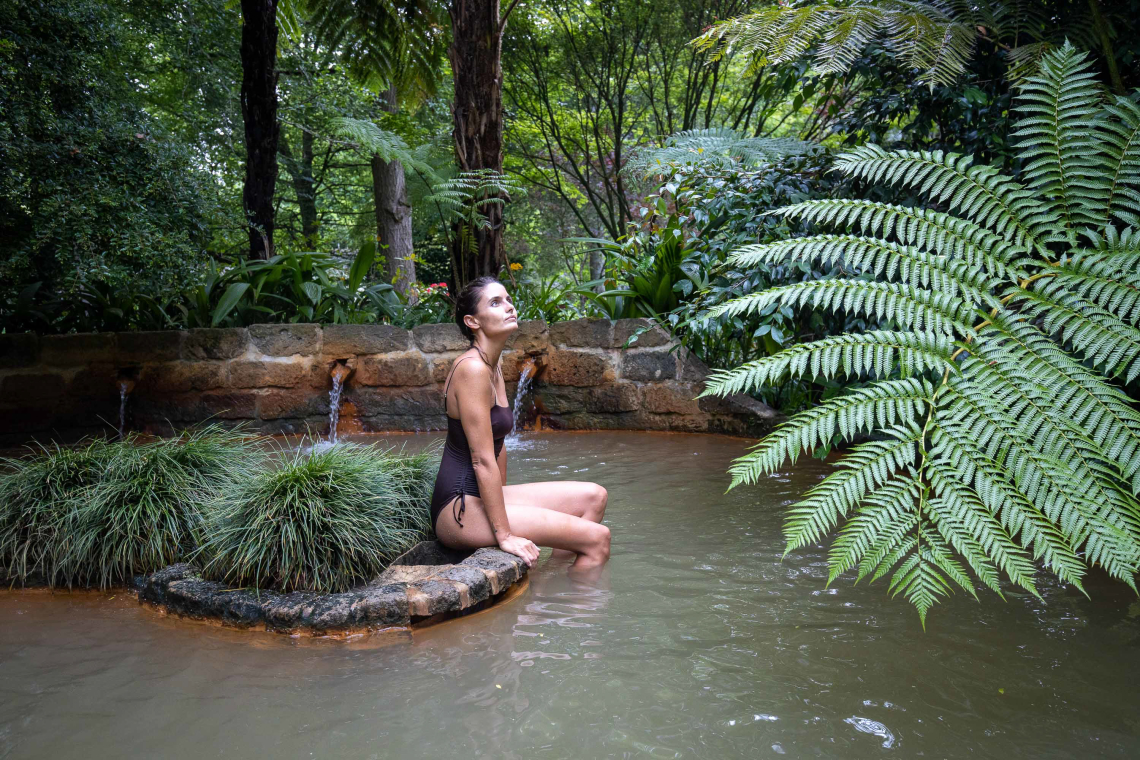
4. Vila Franca do Campo Islet in São Miguel Island
A picturesque nature reserve located approximately 1km off the coast, the Ilhéu de Vila Franca features a saltwater inlet created by a volcanic crater, making it especially perfect for swimming and snorkeling! This little islet is rich in marine biodiversity and home to many unique species. To protect them all, the islet is only open to visitors during the summer months and is limited to a maximum of 400 visitors per day.
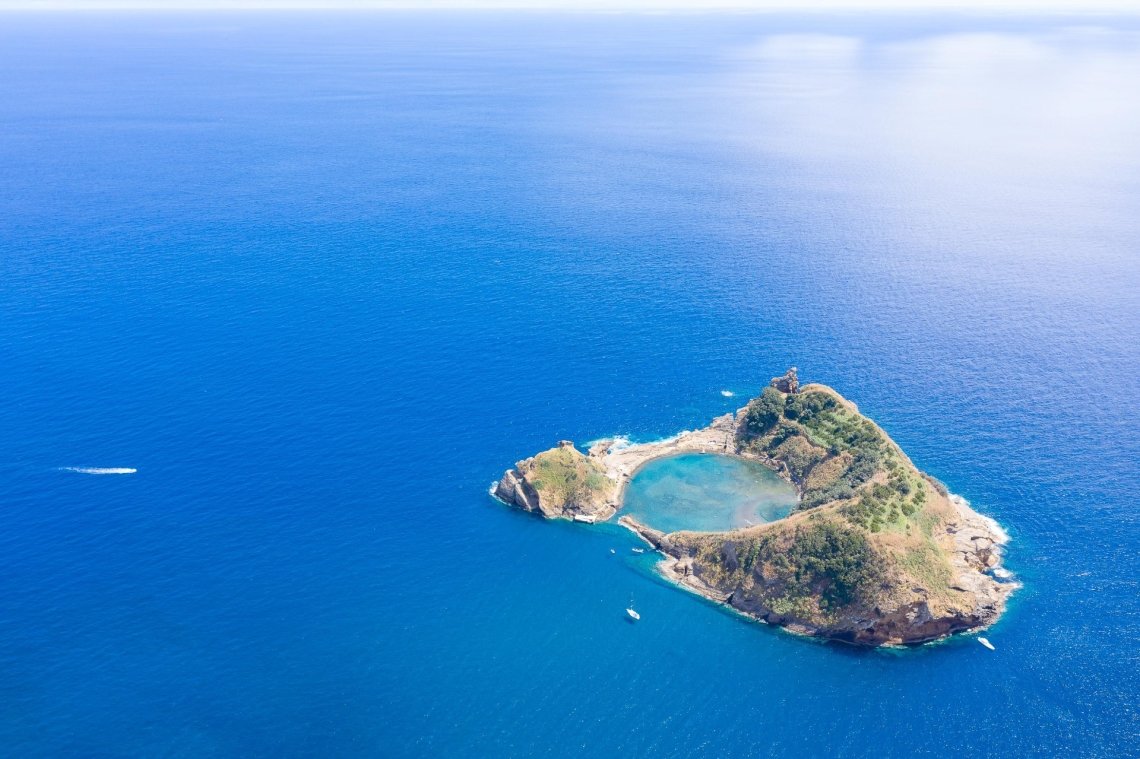
5. Tea Plantations in São Miguel Island
The Azores Islands are known for their breathtaking natural beauty, unique volcanic properties, delicious food, and endless opportunities for adventure. Producing amazing local tea, which has been grown here for almost 200 years, the Azores have quietly reigned as Europe's secret tea capital. In the middle of the Atlantic, roughly 900 miles from the coast of mainland Portugal, you'll find Europe's only two commercial tea plantations sprawling along the hillsides of São Miguel Island's North Coast.
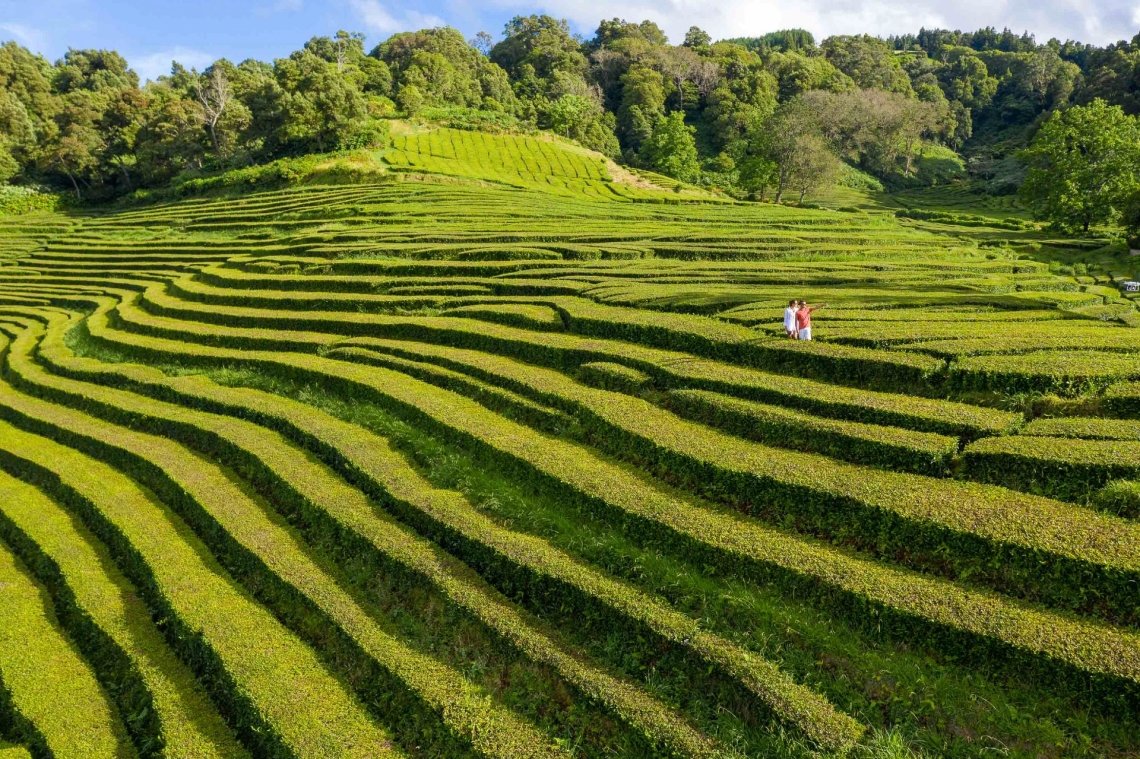
6. São Lourenço Bay in Santa Maria Island
Santa Maria Island is often referred to as the "Algarve of the Azores", and one visit to the dreamy white sand coastline of São Lourenço Bay is enough to understand why. The calm, crystal clear waters are protected by steep, dramatic cliffs on either side and sweeping vineyards stretch up the hillsides painting a picturesque backdrop behind the bay.
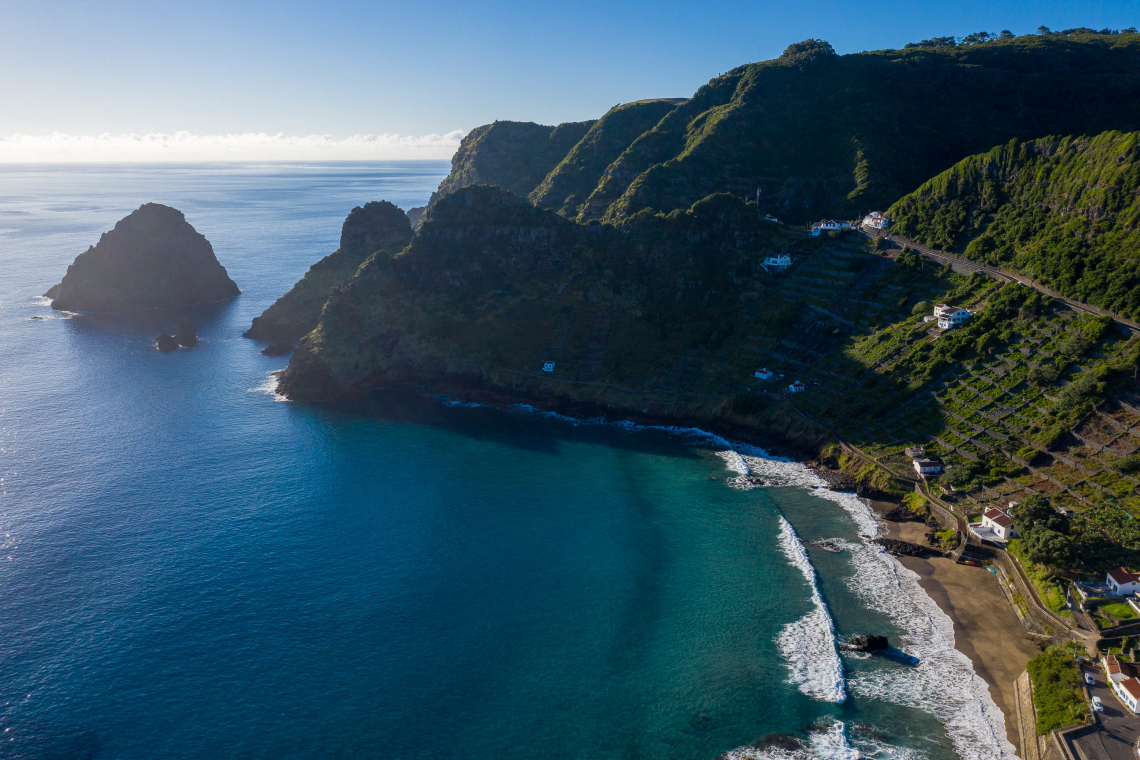
7. Barreiro da Faneca in Santa Maria Island
Designated the "Red Desert of the Azores'', the Protected Landscape Area of the Barreiro da Faneca is a fascinating sight and a unique piece of geological history. The reddish clay found here was formed by lava flows, volcanic ashes, and 3 to 4 million years' worth of warm, humid weather. Those who catch a glimpse of this rare and beautiful natural landscape firsthand are in for a treat indeed.
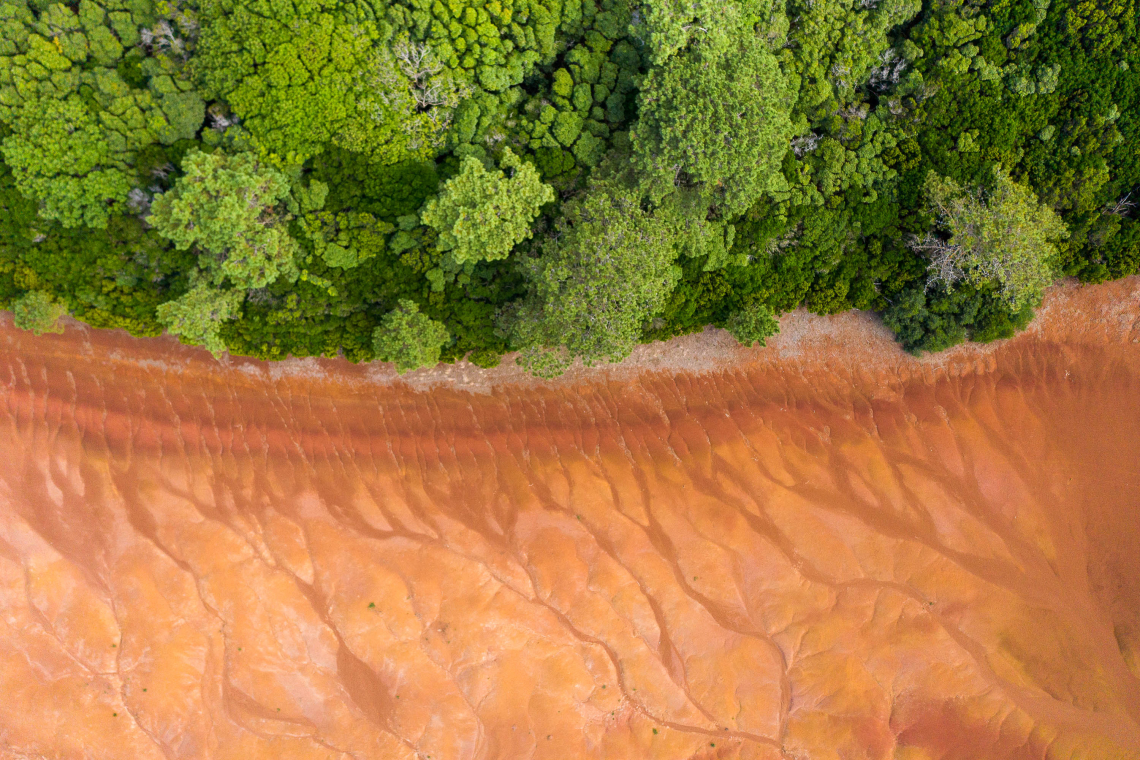
8. Pico Mountain in Pico Island
Towering at 2,351 meters (7,713 ft) tall, Mount Pico looms above any other peak in the Azores, and any in all of Portugal itself for that matter! The good news is that you don't need to hike this impressive tallest mountain in Portugal to appreciate its beauty, though it is one of the most popular hiking attractions in Europe. This is because Mount Pico can be seen from nearly any spot on Pico Island, as well as from the nearby islands of Faial and São Jorge, and on sunny days, Pico can even be seen from Terceira and Graciosa.
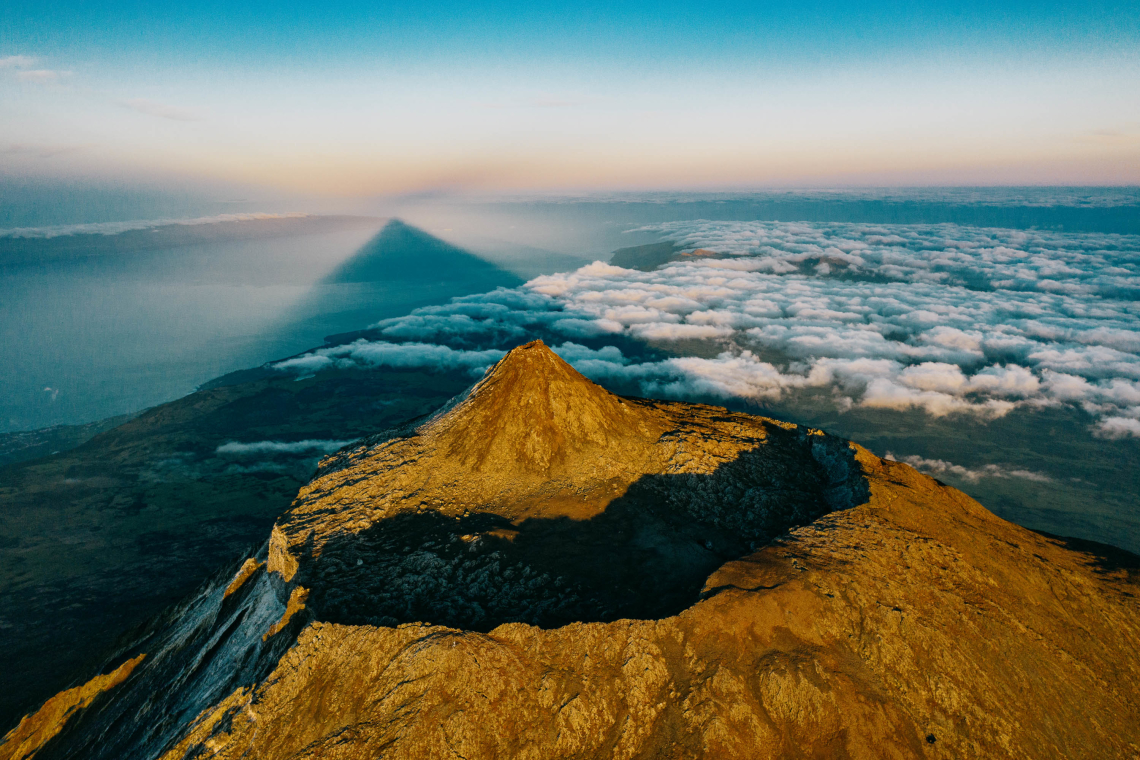
9. The Vineyards of Criação Velha in Pico Island
Early settlers began cultivating wine throughout the rocky shores of Pico Island as early as 1450. Wines were exported through merchants on neighboring Faial Island, allowing the industry to grow and flourish. The vines grow heartily from the mineral-rich lava soil and rock, which absorbs and gives off the heat needed to ripen the grapes. Vintners adapted to the harsh landscape by lining their vineyards with basalt stones to protect the grapes from the fierce winds and salty ocean air. The small plots of land, which are lined with volcanic stones, are known as "currais", and are protected and classified as an official World Heritage Site by UNESCO. Pico's vineyards grow mainly Arinto, Terrantez, and Verdelho grapes to produce a variety of white, sparkling, sweet, red, rosé and fortified wines which you can try on one of the island's many wine and vineyard tours in Pico.
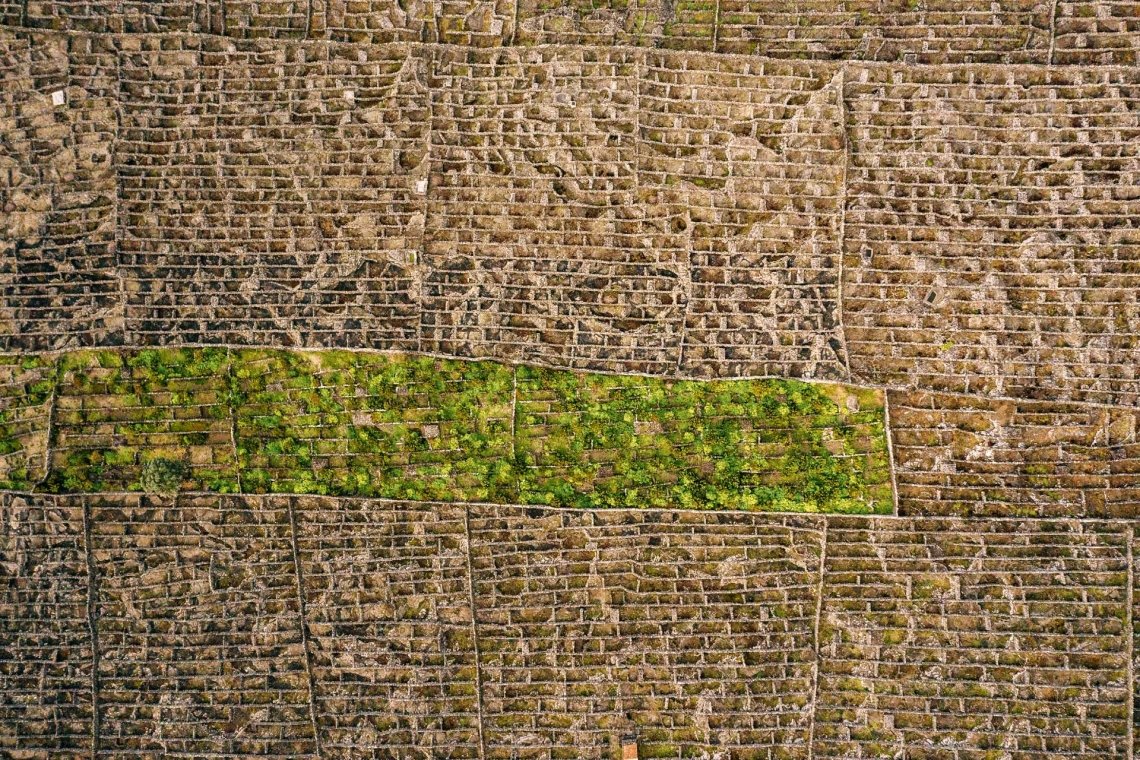
10. Fajãs of São Jorge Island
São Jorge is known for its beautiful "fajãs" and coastal views. A fajã is a permanent debris field constructed from landslides or lava flows and there are more than 40 on this island alone. Many can only be accessed through foot trails or by ATVs, but even if you can't make the trek, they are worth admiring from one of the many viewpoints overlooking them all around the island. From the Fajã da Caldeira do Santo Cristo, the most famous because of its delicious local clams, to the Fajã dos Cubres, with its sparkling lagoon, and the Fajã do Ouvidor with its natural ocean pools, you can plan your trip to São Jorge around a fajã itinerary alone!
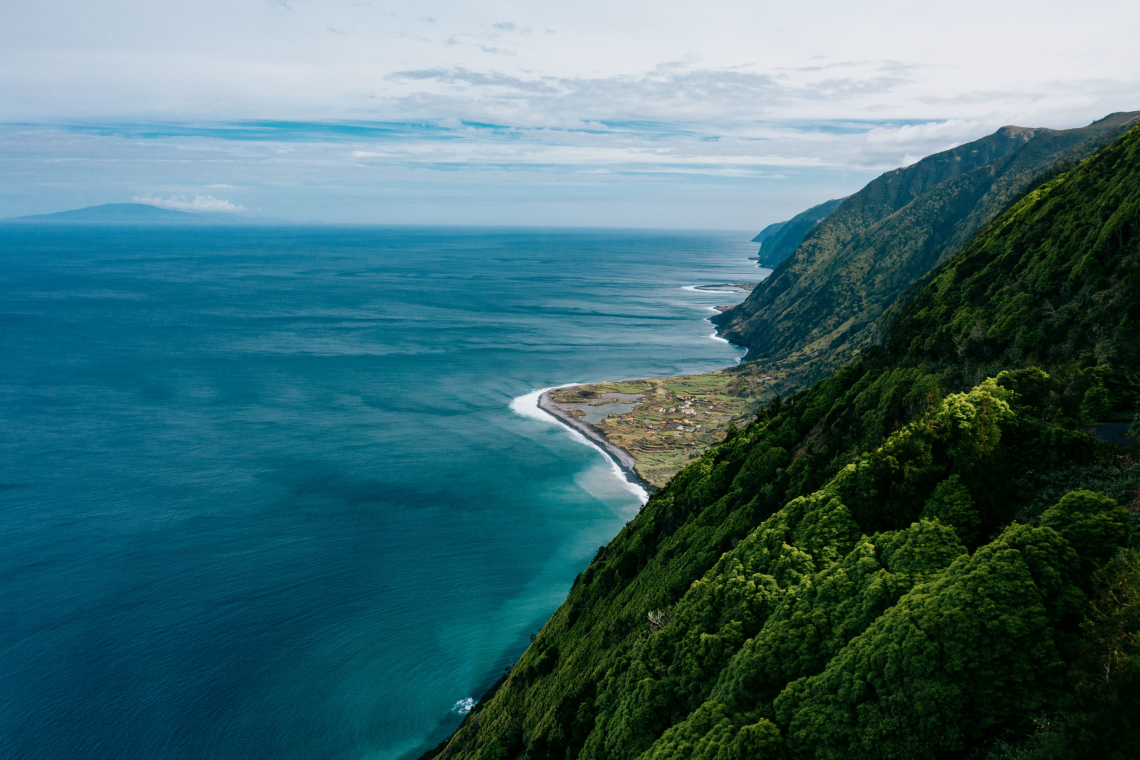
11. Islets of São Jorge Island
A visit to São Jorge would not be complete without taking some time to admire the beautiful islets located just off the island's coast. Ponta dos Rosais is a nature reserve and natural monument that stretches from the coastal cliffs of Pico dos Castelos on the southern coast to the northern cliffs and pasture lands of Chã do Areeiro. This beautiful point also has several islets dotting the coast and is an excellent spot for diving or boat tours. Head to the eastern tip of the island to observe the Islet of Topo, another nature reserve that is a nesting ground for many seabirds and home to some endemic flora of the Azores.
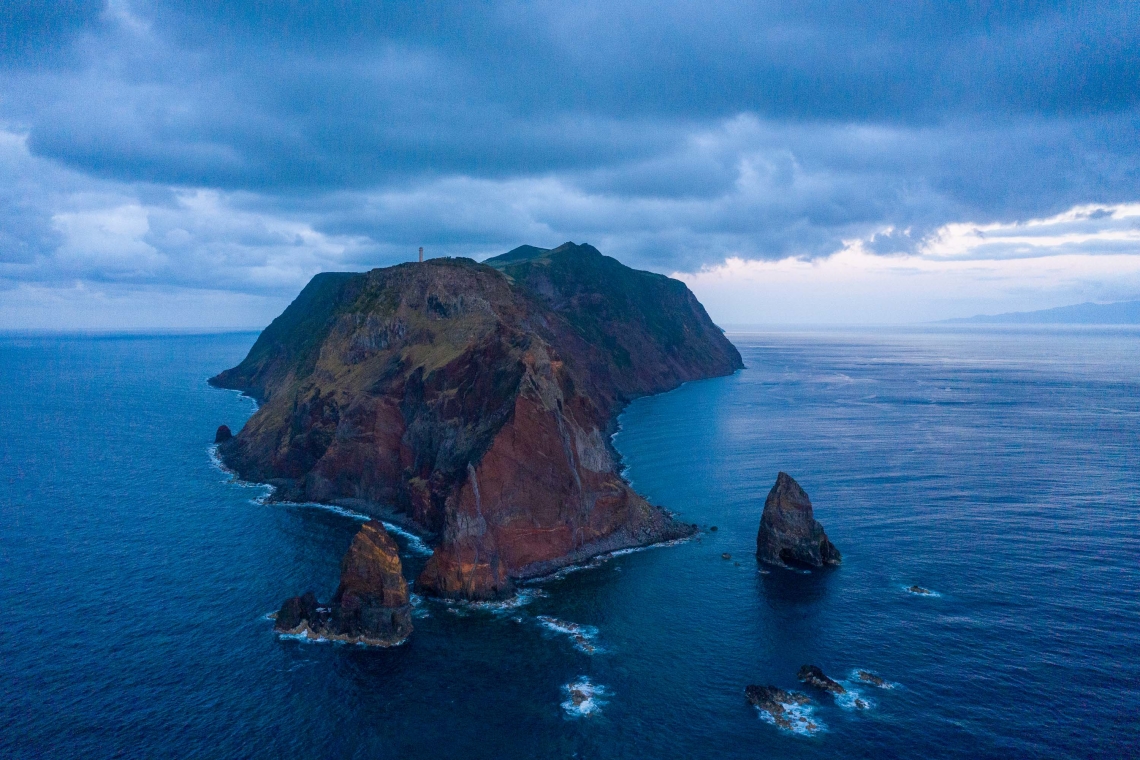
12. Serra do Cume in Terceira Island
One of the most popular attractions on Terceira Island, the spectacular Serra do Cume, is the result of a volcanic eruption. This flat "patchwork" plain was once a volcanic crater and is now a large stretch of vibrant green pasture land divided by basalt rock walls. At its highest point, Serra do Cume rises to 545 meters (1,788 ft) in height, allowing for wide, panoramic views and excellent visibility. From one of its faces, you can see the city of Praia da Vitória and its nearby bay and even Lajes Air Base. The other side offers an equally enchanting view of the immense plain and its vegetation, set just beyond the natural stone walls.
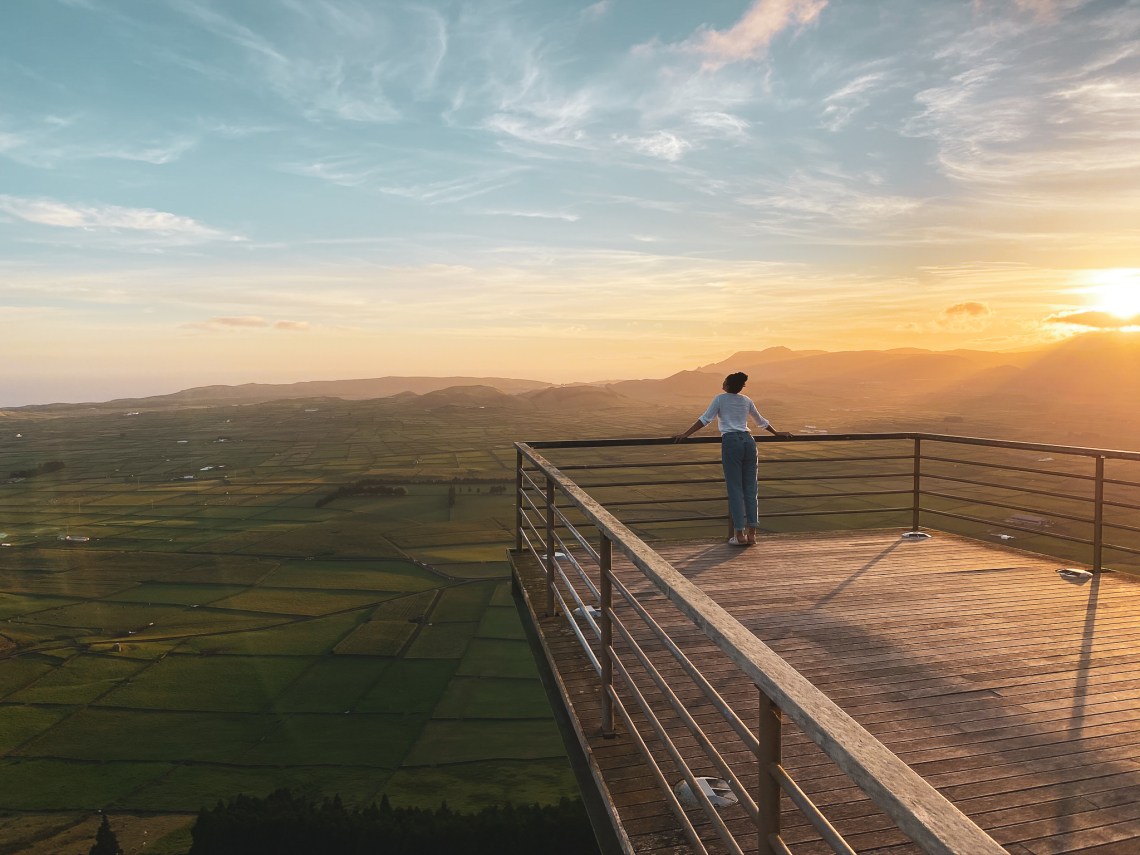
13. Algar do Carvão in Terceira Island
Descend 90 meters (300 ft) down into one of the only volcanoes in the world that you can enter and explore! Algar do Carvão is an ancient lava tube and volcanic chimney that was formed approximately 3,200 years ago, and it is quite a sight to behold. This popular spot is a natural reserve with limited visiting hours, so be sure to plan and put it at the top of your list.
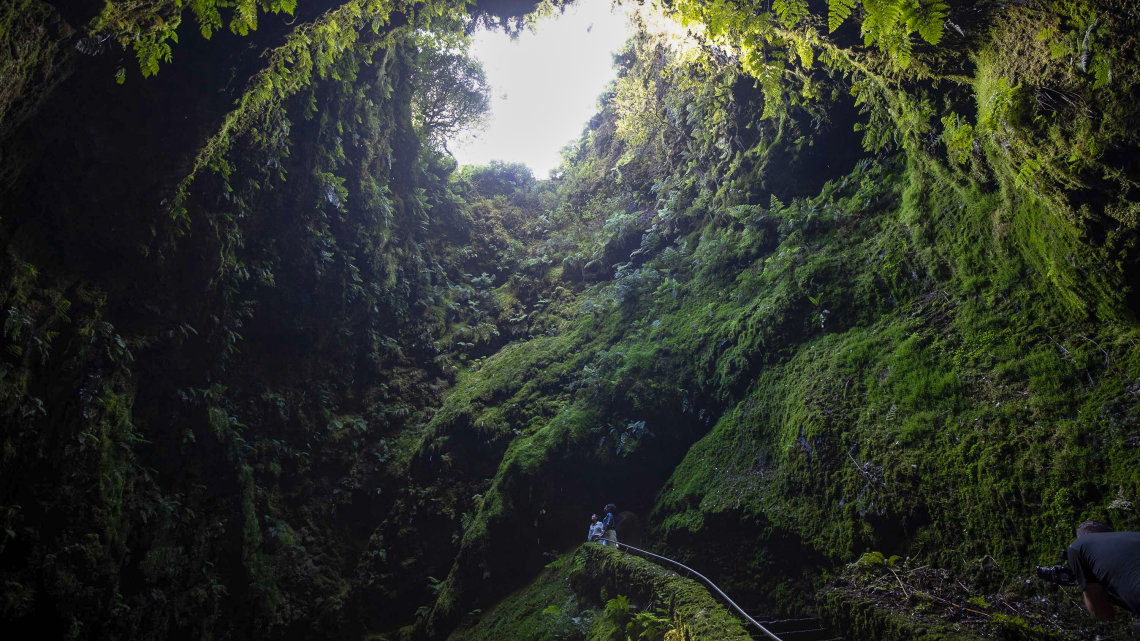
14. Monte Brasil in Terceira Island
The Monte Brasil is the result of a collapsed volcanic cone that ended up attaching to the beautiful historic city of Angra do Heroísmo (Angra). Terceira Island’s capital, Angra do Heroísmo is an official UNESCO World Heritage Site that will take you back in time to simpler days filled with maritime trade. Monte Brasil now functions as a shelter to the city, and if you go to the top of it, you'll be rewarded with a 360º panoramic view overlooking Angra and the entire island.
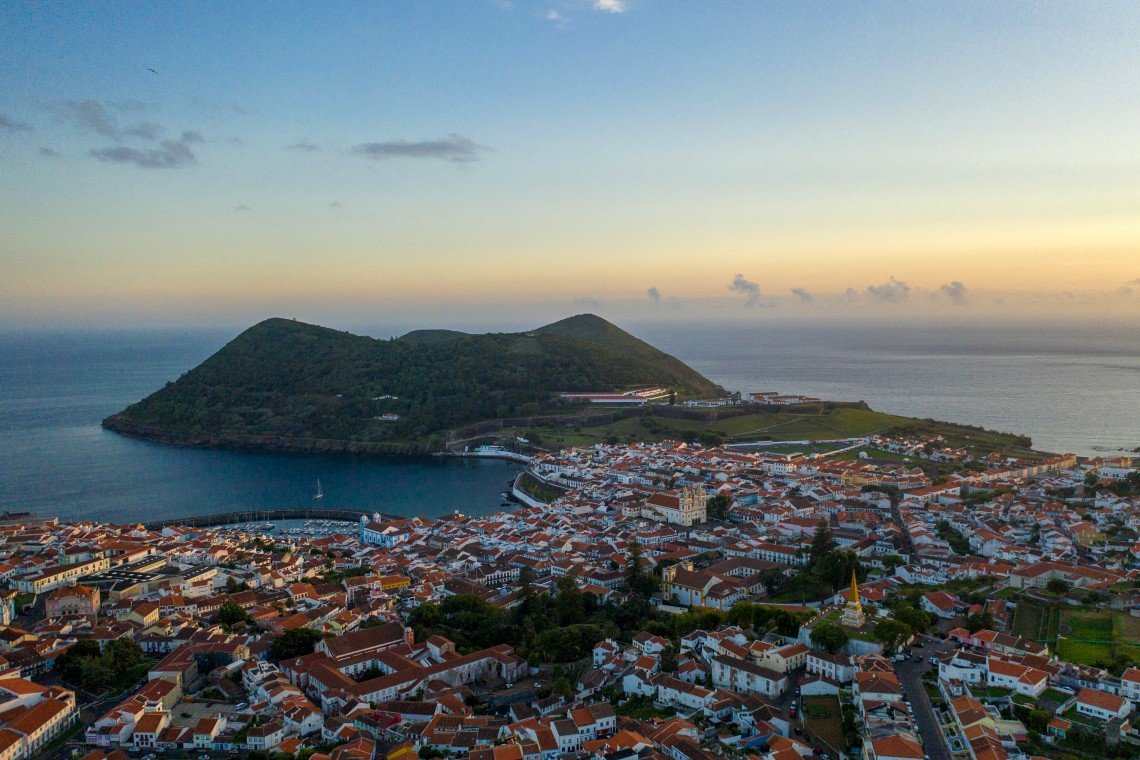
15. Capelinhos Volcano in Faial Island
Capelinhos Volcano, located on the western cape of Faial Island, is the site of the Azores' most recent volcanic eruption which occurred in September 1957 and lasted through October 1958. This volcanic eruption started underwater, eventually boiling to the surface. The volcano spewed enough ash, sand, and lava to form a new land mass, almost completely burying the nearby lighthouse. Now, it's lighthouse and underground Visitors Center serve as popular landmarks. In fact, the Visitors Center was constructed underground so it wouldn't interfere with the stunning volcanic landscape, which is so mystical, it evokes the feeling of being on Mars! The locale is worth visiting, as it is full of amazing expositions that are focused not only on the Capelinhos eruption but also on volcanic activity in the Azores and beyond.
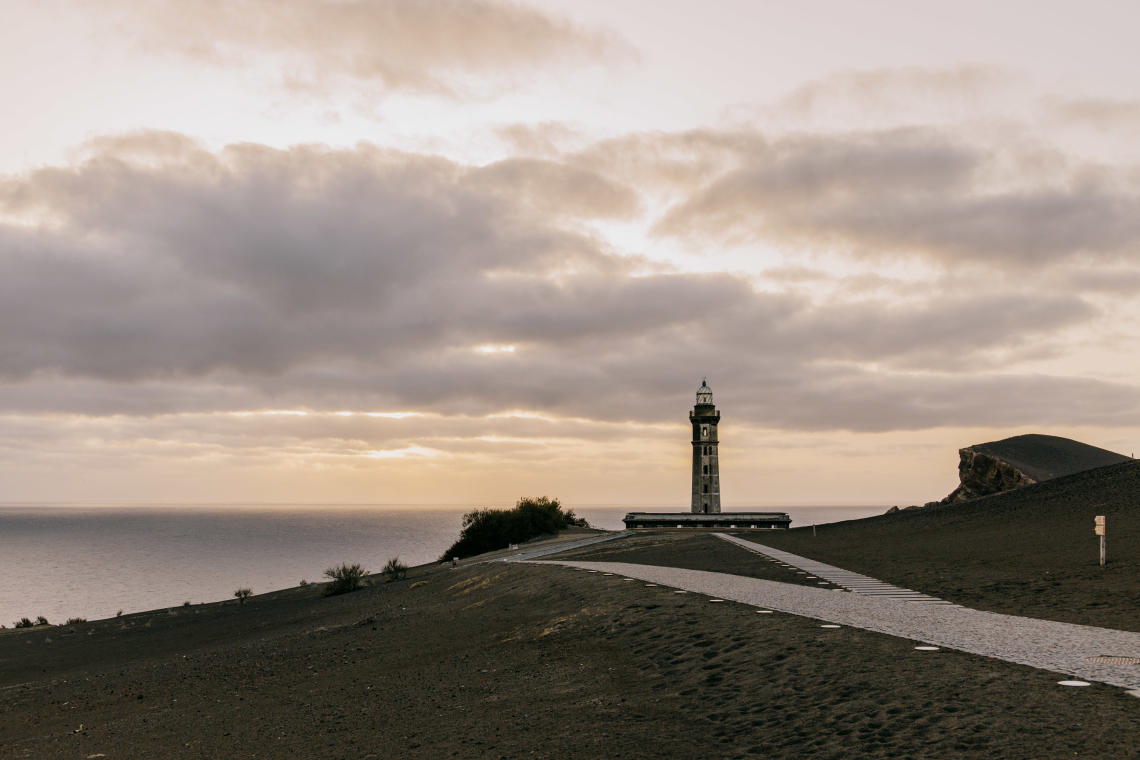
16. Porto Pim Bay in Faial Island
Porto Pim Bay in Horta is home to one of the most frequented and desirable bathing areas of Faial Island. The landscape of this beach featuring fine sand and calm blue waters is complemented by the imposing volcanic cone of Monte da Guia. A former whaling area, Porto Pim Bay has vast historical importance, as it was where Faial's first inhabitants settled on the island.

17. Caldeira of Faial Island
The Caldeira do Faial Nature Reserve is a sanctuary of rare, endemic flora of the Azores. It is a 400-meter (1,312 ft) deep crater that resulted from the eruption of the largest volcano on the island. Enjoy this scene from the viewpoint of Caldeira do Faial, or head out on one of the trails on a hike that winds around this impressive landscape for an entirely different perspective.
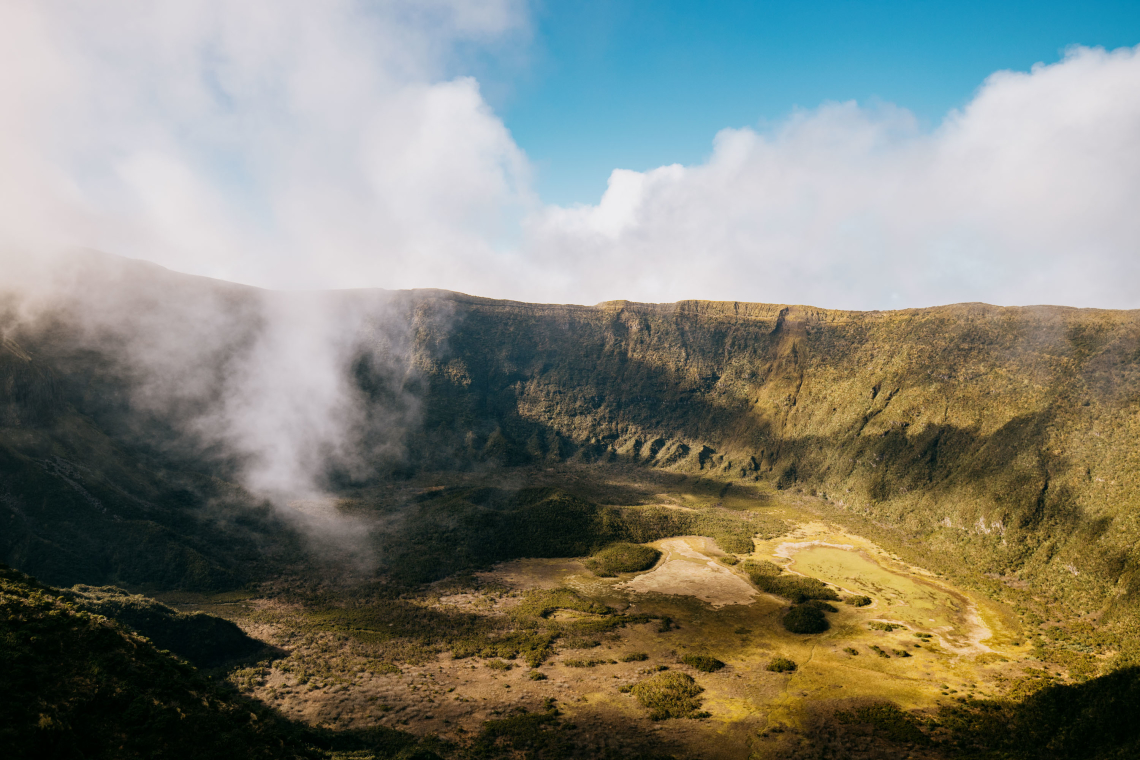
18. Windmills of Graciosa Island
The Flemish-influenced windmills of Graciosa Island are widespread throughout the island, and some of them serve as local accommodations for visitors looking to have a unique and authentic experience. You’ll not find a much more rare vacation abode than that!
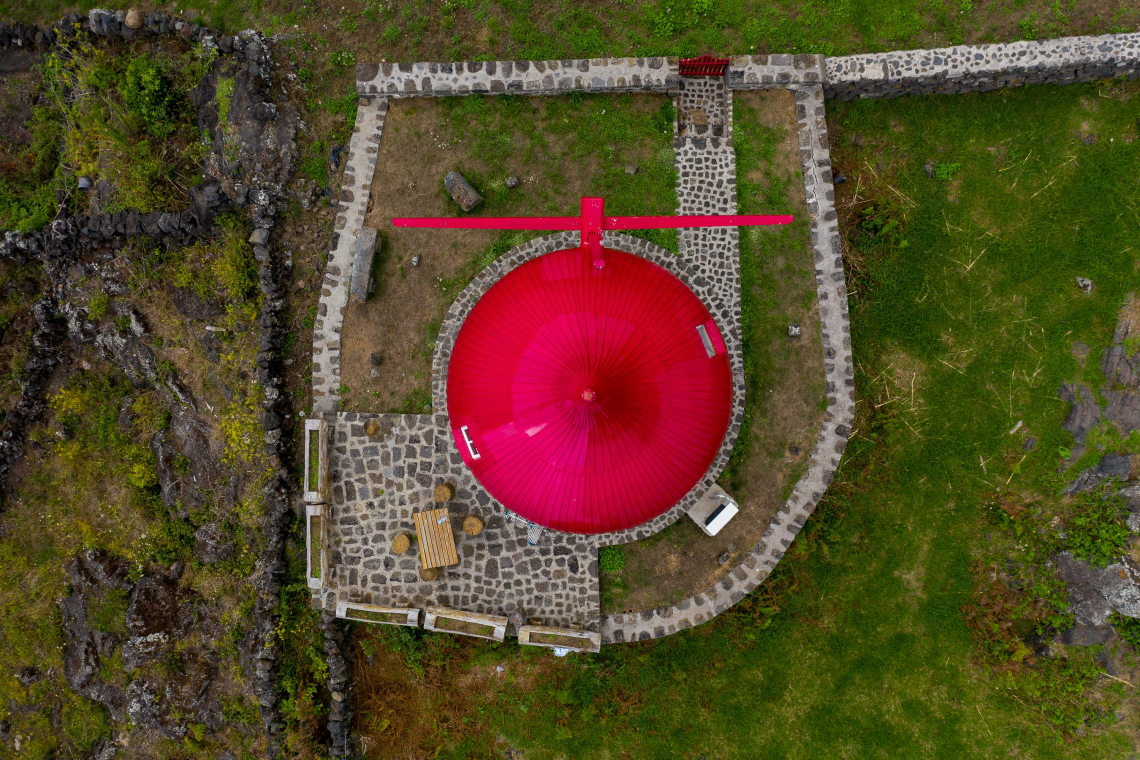
19. Furna do Enxofre in Graciosa Island
On Graciosa Island, get ready to experience a lava cave of unique beauty. Furna do Enxofre's main feature is its impressive perfectly vaulted ceiling. Before entering the cave, you will walk through a mystical 200 m (656 ft) tunnel and then a 183-step staircase leads you further down on a descent into the Earth. The play of light inside Furna do Enxofre makes this natural setting a complete visual spectacle while allowing you to observe the fascinating details of volcanic activity up close.

20. Poço das Alagoinhas in Flores Island
Although Flores Island got its name from the immense stretches of flowers that blanketed the island when settlers first arrived, the main attraction of the island is actually its many waterfalls. Poço das Alagoinhas, which is also known as Poço da Ribeira do Ferreiro, is an unbelievable cliffside featuring an incredible 20 waterfalls! It’s an experience like no other to witness these epic waterfalls cascading down among lush vegetation, then ending in an idyllic lake. Poço das Alagoinhas is only accessible by a hiking trail, which makes it an even more special and pristine place, where the only thing you can expect to hear is the serene sound of gently falling water and sweet birdsong (and maybe a few frogs!)
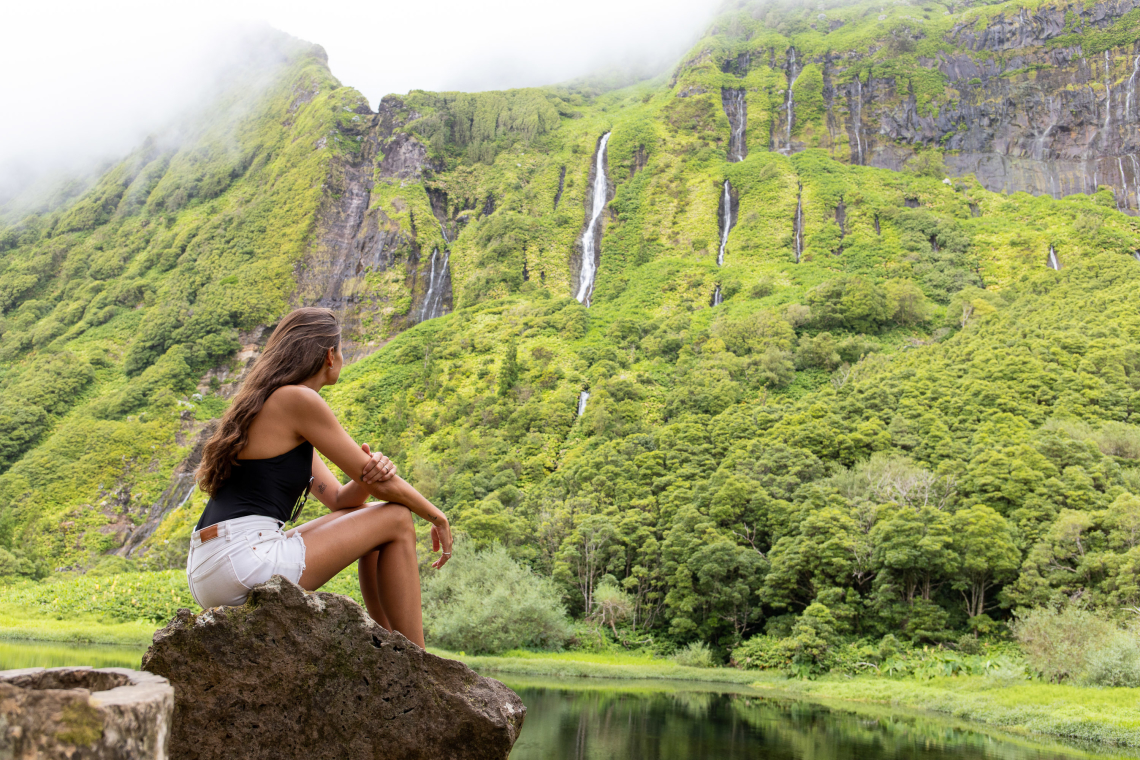
21. Poço do Bacalhau in Flores Island
In Fajã Grande, you will find Poço do Bacalhau with its powerful waterfall that rushes down from a height of 90 meters (295 ft). At its mouth, you'll find a small lagoon where the bravest dare to take a refreshing bath in the cool waters. Just next door to this waterfall, you'll find many charming traditional homes, complete with local cows and goats grazing--all of which culminate to create an idyllic, storybook setting.

22. The Seven Lakes of Flores Island
No tour through Flores would be complete without a visit to each of its seven stunning lagoons. The viewpoint of Lagoa Negra and Lagoa Comprida is sure to become one of your favorite places on the whole island, but the lagoons of Rasa and Funda, Lagoa da Lomba, and the Branca and Seca lagoons will certainly not be far behind.
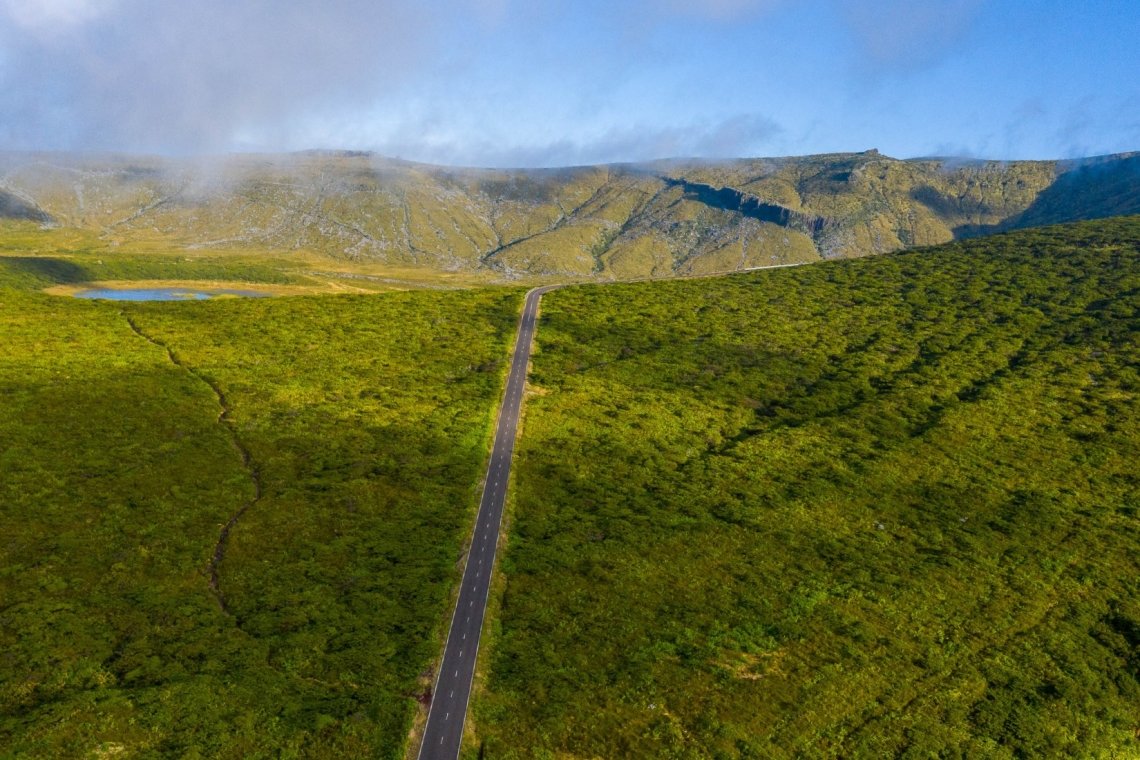
23. Rocha dos Bordões in Flores Island
From wondrous waterfalls and lovely lagoons to impressive geological formations, Flores Island is full of natural surprises and beauty just waiting to be discovered around every corner. Located in the village of Mosteiro, Rocha dos Bordões is a 570,000-year-old geological monument with vertical columns that stretch about 20 meters. The magic of the place increases tenfold when the hydrangeas are in bloom in the warm seasons, filling the landscape with vibrant color and sweet floral aromas of nature’s perfume.
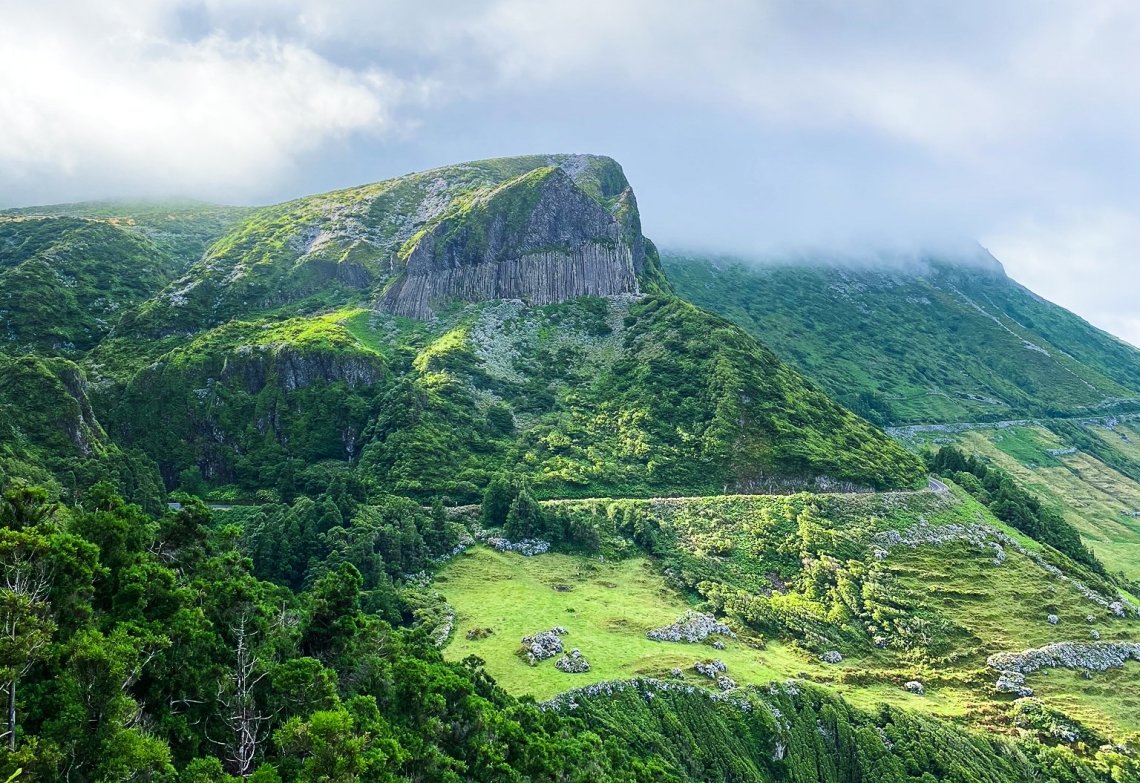
24. Alagoa Bay in Flores Island
Also setting Flores Island apart as an extra special locale are its coastal formations and cliffs, which are perfect for scuba diving and canyoning, or even to simply be admired via boat tour. The Nature Reserve of Alagoa Bay consists of several islets jutting up from the crystal clear waters of the Atlantic. Flores is an island full of character, and its sea coast is home to as many islets including Ilhéu do Garajau, Ilhéu do Pão de Açúcar, Ilhéu de Monchique, Maria Vaz e do Cartário, among others, all of which you can discover on a coastal boat trip.
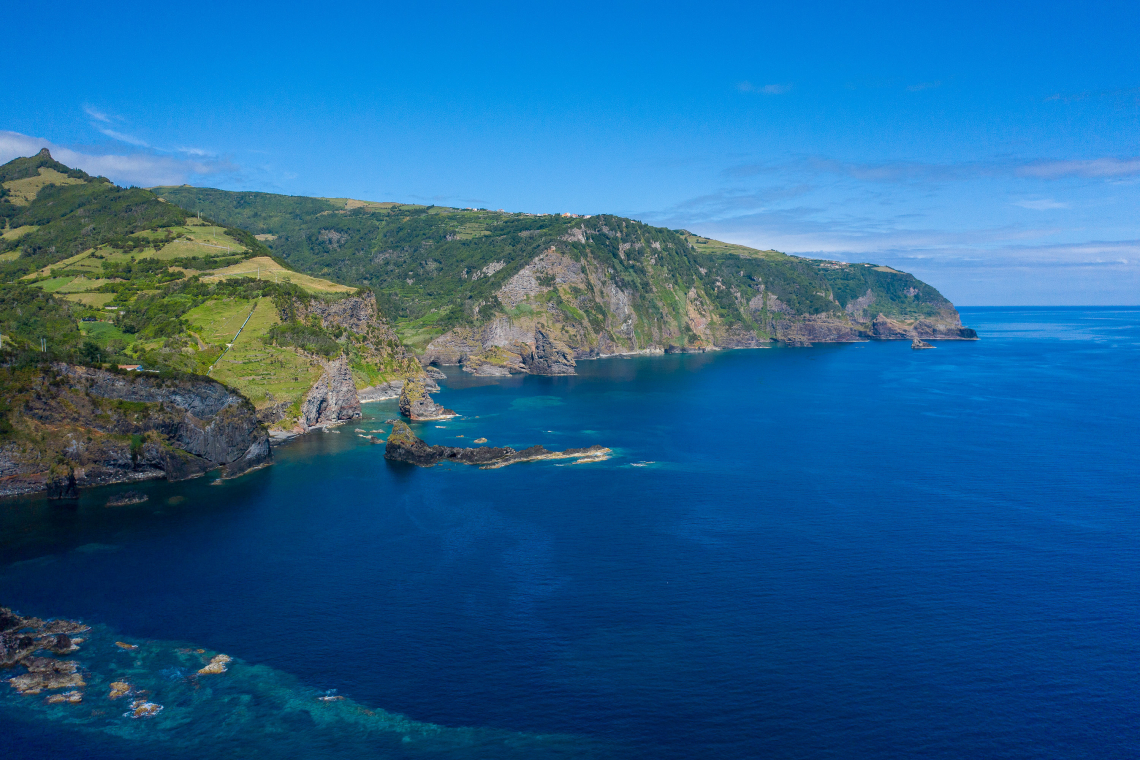
25. Caldeirão in Corvo Island
One of the Azores' most beautiful natural landscapes can be found on the smallest and most remote island of Corvo. The island's only paved road leads to the breathtaking Caldeirão, a crater that resulted from the island's single volcano of origin. Boasting an impressive 3.7 kilometer (2.3 mi) circumference and 300 meters (985 ft) depth, this gigantic crater can be reached via spectacular hiking trails, or accessed from the viewpoint above. The crater also has two lakes with a few tiny islets, which locals like to say represent the islands of the archipelago.
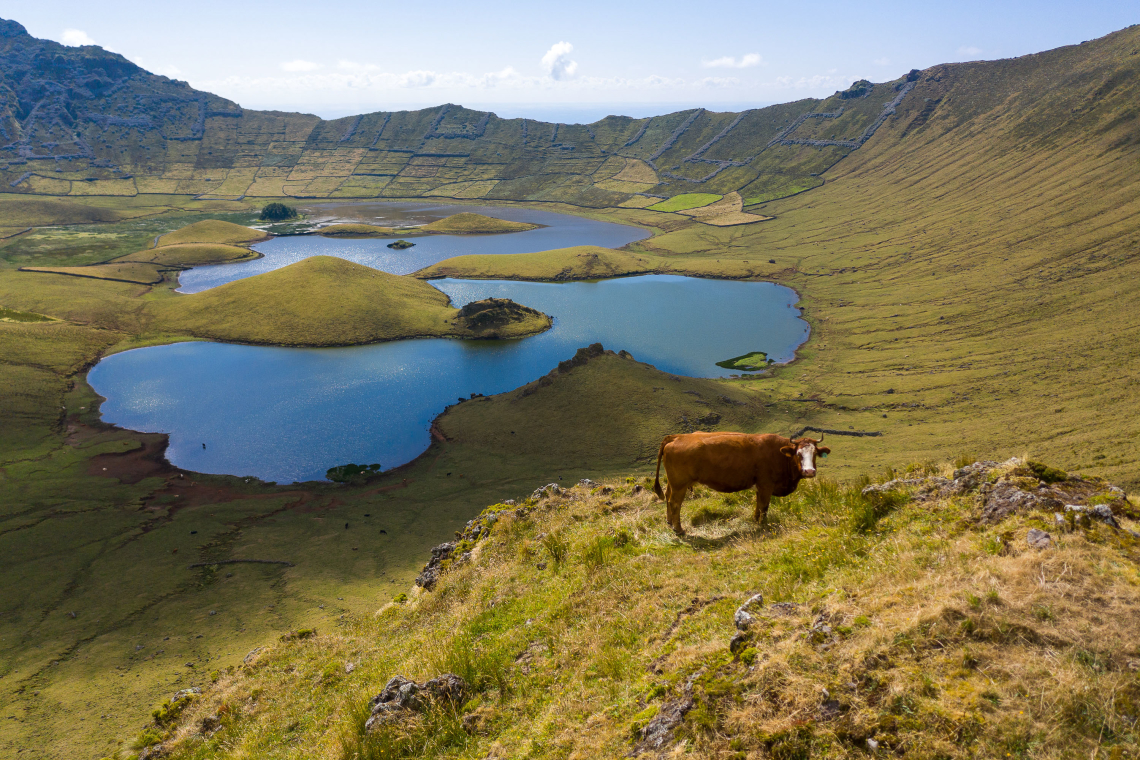
Are you already in love with the Azores? Take a look at our stress-free packages that allow you to book your ultimate island adventure. All our packages are carefully curated by our team of local Azorean Experts so that you don’t need to worry about any details – just enjoy your trip!

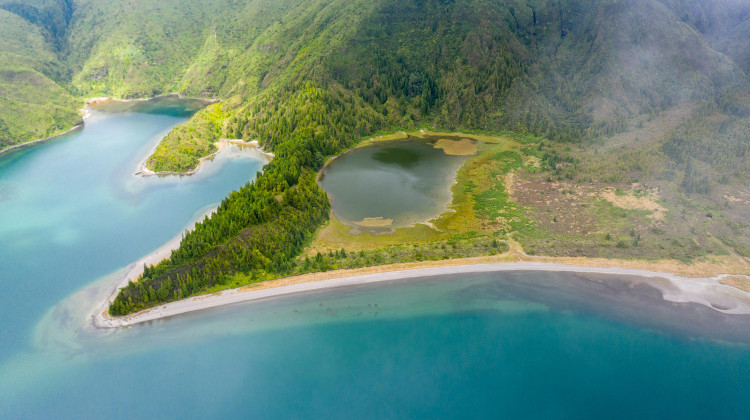
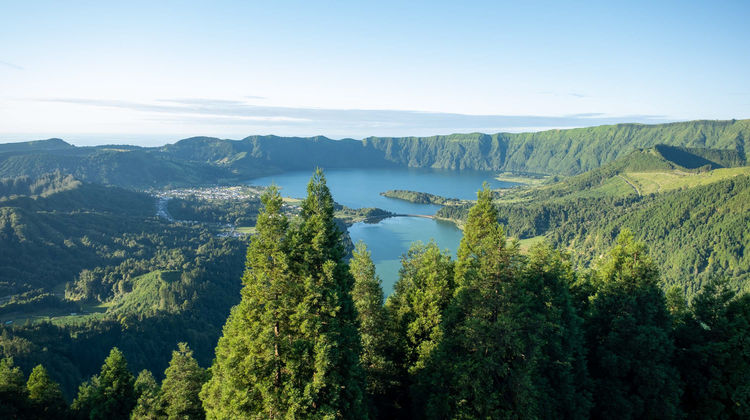
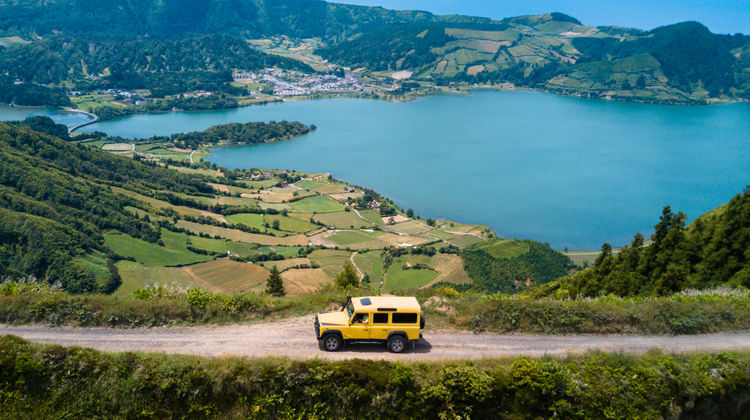
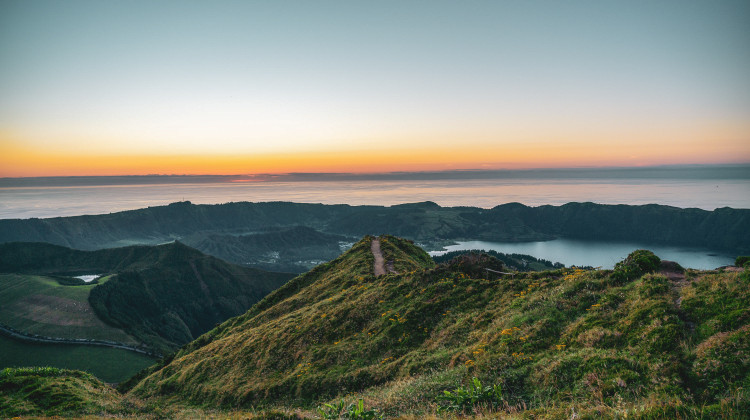
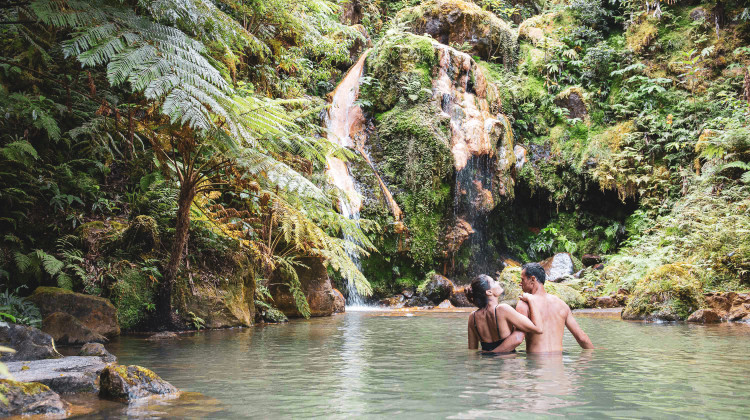
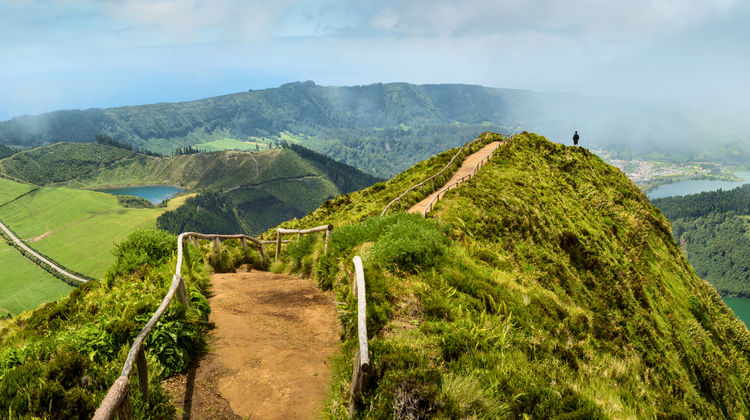

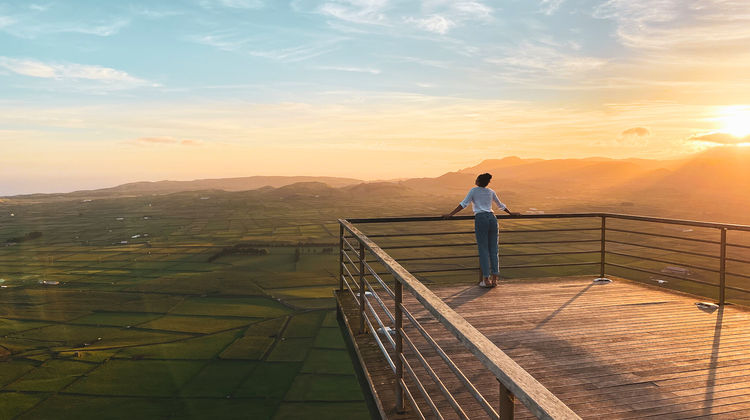
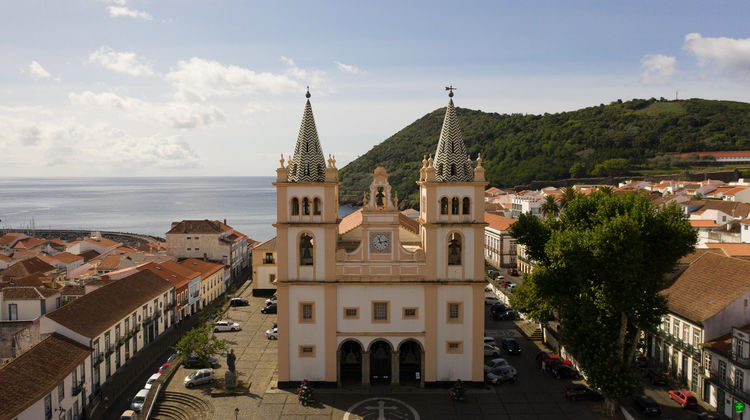
.jpg)
